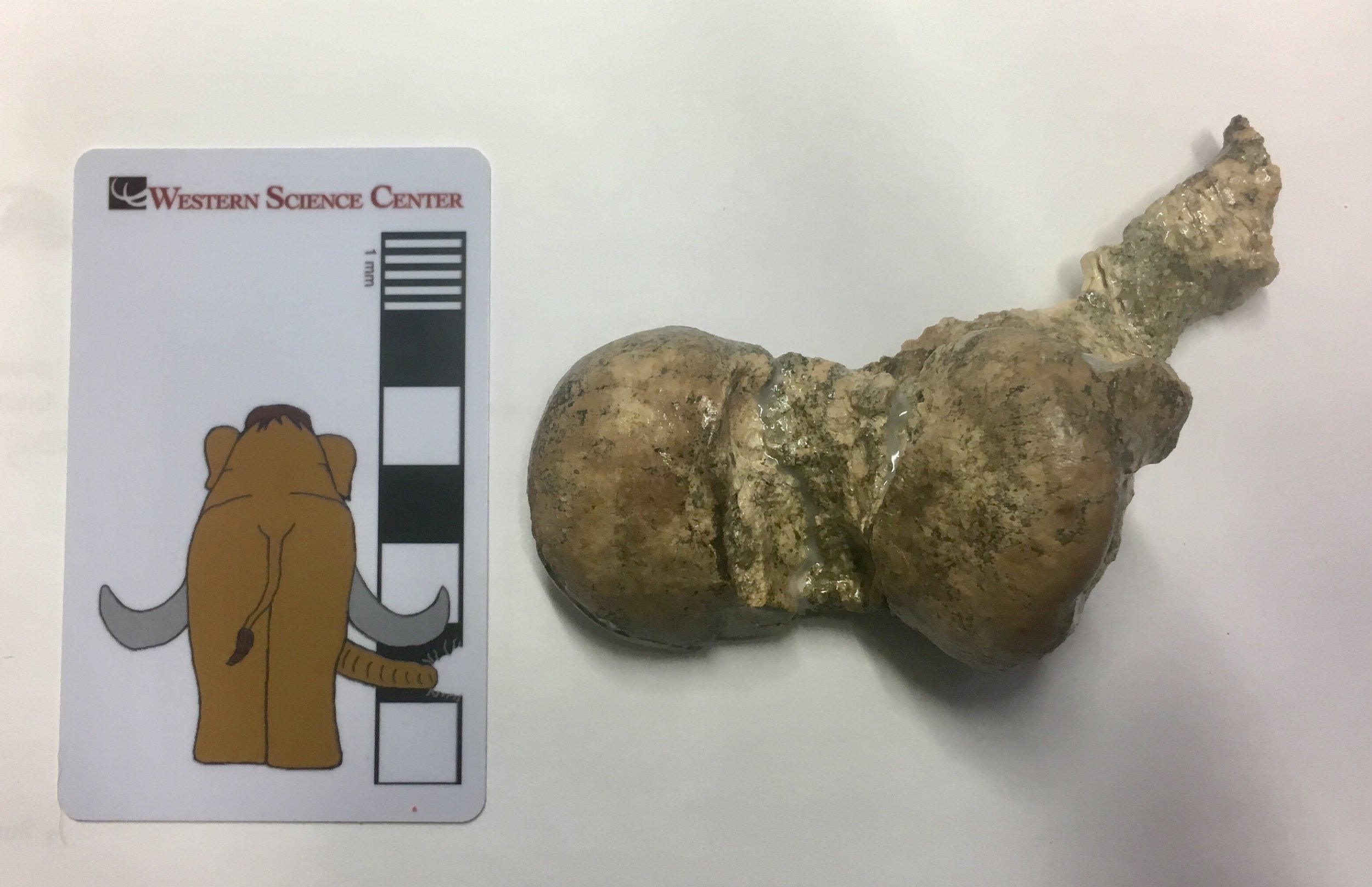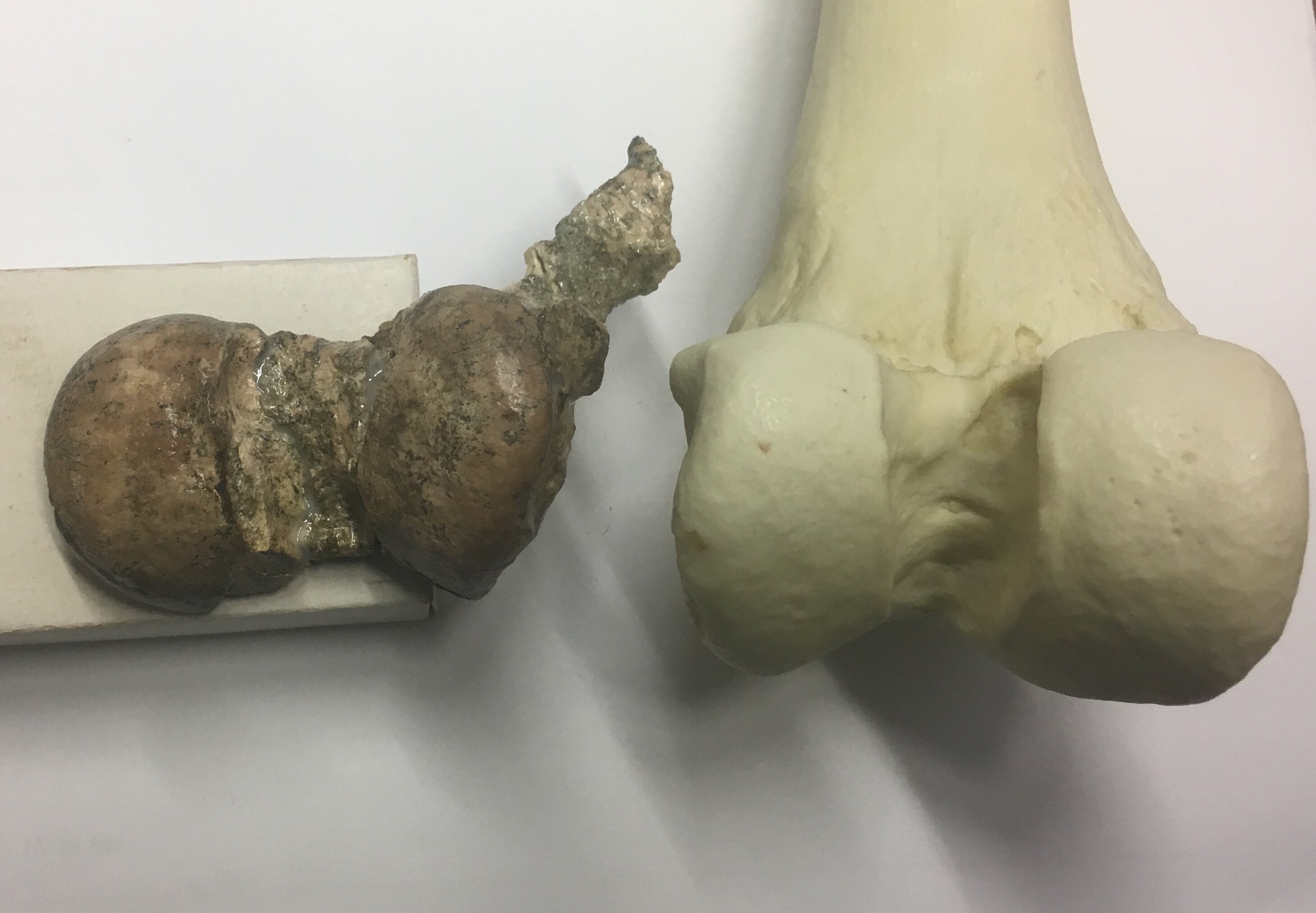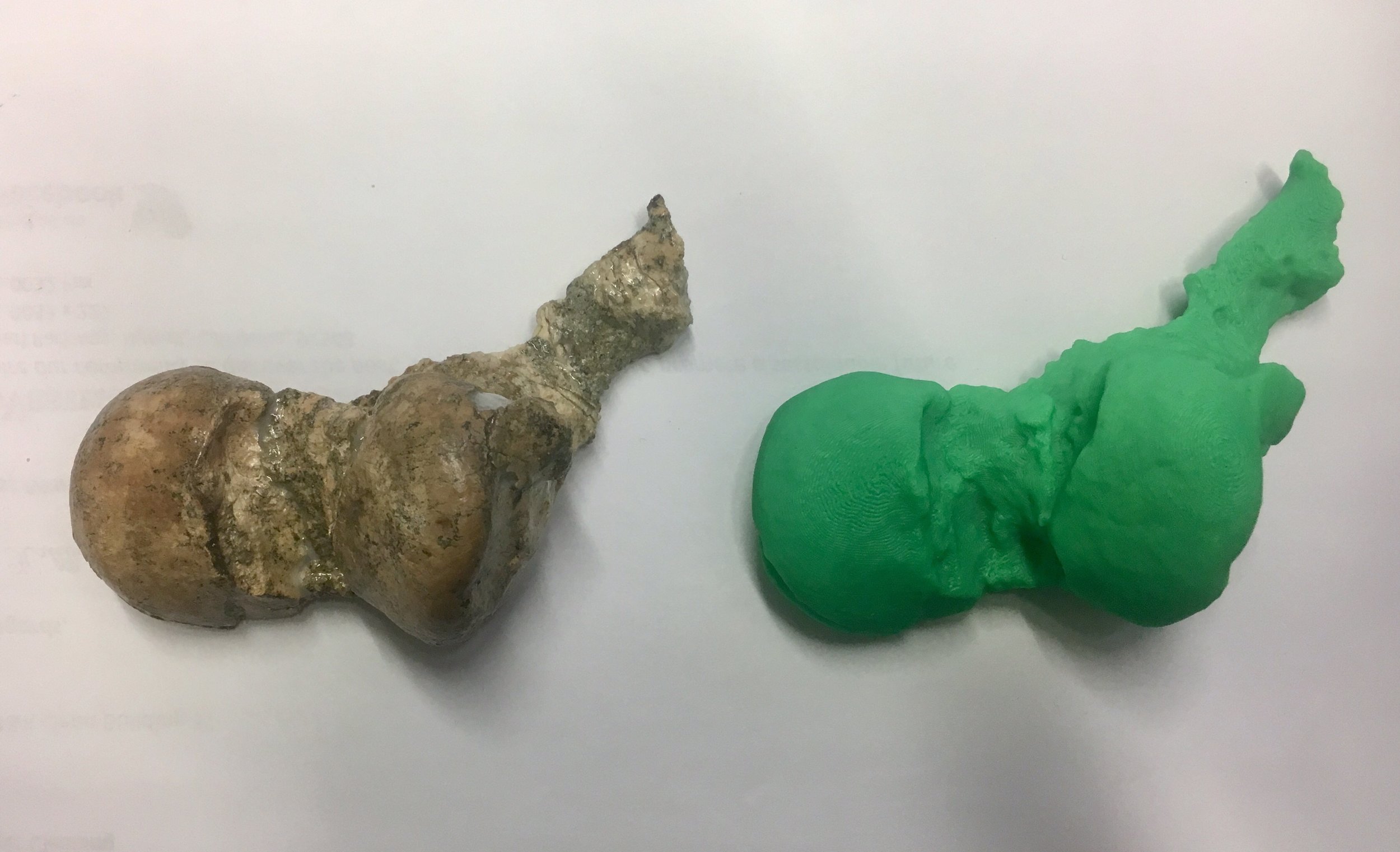 Carnivores make up a relatively small percentage of any stable ecosystem; the principle of Conservation of Mass and Energy really doesn't allow for any other possibility. As a result, carnivores generally make up a tiny percentage of the fossils found in most deposits (although there are exceptions, such as predator traps like Rancho La Brea). Nevertheless, sometimes paleontologists get lucky and carnivores turn up in herbivore-dominated deposits. Western Science Center's collection of Early Pleistocene fossils from San Timoteo Canyon is dominated by horses and rodents, with a smattering of other herbivorous taxa. But there are several good carnivoran remains, including a partial skeleton of the sabertooth cat Smilodon. The fragment shown above is the distal end of the right femur, showing part of the knee joint. Compare it to the left femur of a Smilodon from Rancho La Brea, below (since they're opposite sides it's a mirror image):
Carnivores make up a relatively small percentage of any stable ecosystem; the principle of Conservation of Mass and Energy really doesn't allow for any other possibility. As a result, carnivores generally make up a tiny percentage of the fossils found in most deposits (although there are exceptions, such as predator traps like Rancho La Brea). Nevertheless, sometimes paleontologists get lucky and carnivores turn up in herbivore-dominated deposits. Western Science Center's collection of Early Pleistocene fossils from San Timoteo Canyon is dominated by horses and rodents, with a smattering of other herbivorous taxa. But there are several good carnivoran remains, including a partial skeleton of the sabertooth cat Smilodon. The fragment shown above is the distal end of the right femur, showing part of the knee joint. Compare it to the left femur of a Smilodon from Rancho La Brea, below (since they're opposite sides it's a mirror image): These specimens are broadly similar, although there are some detail differences in shape (the projecting piece at the top of the San Timoteo specimen is displaced from its correct position). The San Timoteo specimen is also a bit smaller than the Rancho La Brea one. This isn't a big surprise; the San Timoteo skeleton is thought to be Smilodon gracilis, the ancestor to the later, larger Smilodon fatalis found at Rancho La Brea.We recently made 3D scans of this bone, and produced a 3D print (below). At some point in the near future, we'll be making the scans of this and other S. gracilis bones available online.
These specimens are broadly similar, although there are some detail differences in shape (the projecting piece at the top of the San Timoteo specimen is displaced from its correct position). The San Timoteo specimen is also a bit smaller than the Rancho La Brea one. This isn't a big surprise; the San Timoteo skeleton is thought to be Smilodon gracilis, the ancestor to the later, larger Smilodon fatalis found at Rancho La Brea.We recently made 3D scans of this bone, and produced a 3D print (below). At some point in the near future, we'll be making the scans of this and other S. gracilis bones available online.
